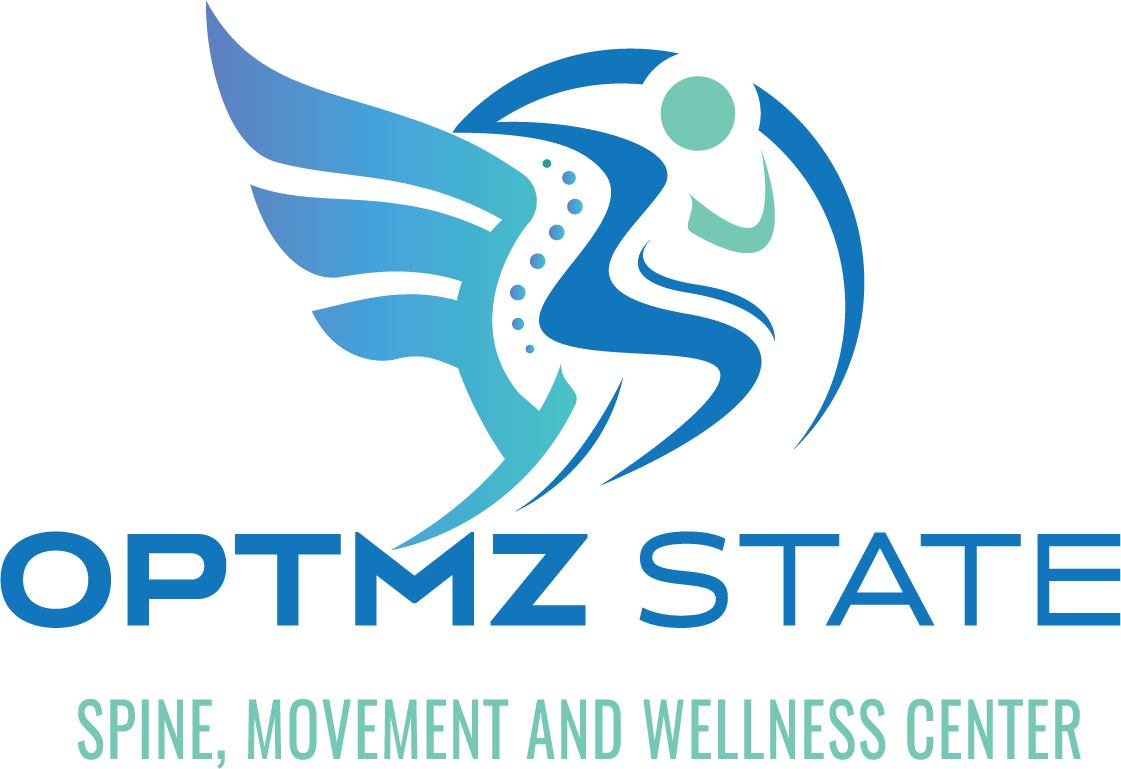If you're dealing with neck pain, you might be surprised at the variety of chiropractic treatments available to help you find relief. From spinal manipulation to soft tissue therapy, each method offers unique benefits tailored to your specific needs. Ergonomic advice and physiotherapy exercises can also play a vital role in your recovery. But how do you determine which treatment is right for you? Understanding the top chiropractic approaches could make all the difference in your journey toward a pain-free neck. Let's explore the most effective options available.
Spinal Manipulation
When you experience neck pain, one effective treatment option is spinal manipulation. This technique involves the application of controlled force to specific joints in your spine. The goal is to restore proper movement, improve alignment, and alleviate discomfort. By focusing on the cervical spine, spinal manipulation can help reduce tension in your neck muscles and improve your overall range of motion.
During a spinal manipulation session, a trained chiropractor evaluates your condition and determines the best approach for your specific needs. You might feel a gentle pressure or a quick thrust as the chiropractor adjusts your spine. Many people report feeling immediate relief from neck pain after just one session, but the benefits can also accumulate over several visits.
Spinal manipulation can also enhance blood circulation in the affected areas, promoting healing and reducing inflammation. By addressing the underlying issues contributing to your neck pain, this treatment can lead to long-term relief and improved function. Additionally, it often complements other therapeutic techniques, such as stretching or strengthening exercises, which can further aid in your recovery.
While spinal manipulation isn't suitable for everyone, it's important to consult with a qualified healthcare professional to assess your situation. They can help determine if this treatment is right for you and devise a thorough plan tailored to your needs.
Embracing spinal manipulation as part of your neck pain management strategy can empower you to regain control and improve your quality of life.
Chiropractic Adjustments
Chiropractic adjustments play a key role in managing neck pain, building on the benefits of spinal manipulation. These specific adjustments target misalignments in the cervical spine, helping restore proper function and mobility.
When you undergo chiropractic adjustments, you're likely to experience immediate relief from discomfort, as well as long-term benefits that promote overall spinal health.
During an adjustment, the chiropractor uses their hands or specialized instruments to apply controlled force to your neck joints. This process can help reduce inflammation, increase blood flow, and enhance your range of motion.
Here are some key benefits of chiropractic adjustments for neck pain:
- Pain Relief: The adjustments can alleviate tension and reduce pain levels, making daily activities more manageable.
- Improved Functionality: Enhanced alignment often leads to better neck function, allowing you to move without discomfort and engage in your favorite activities.
- Preventative Care: Regular adjustments can help prevent future neck pain by maintaining spinal health and preventing misalignments from recurring.
Soft Tissue Therapy
Soft tissue therapy can greatly enhance your recovery from neck pain by focusing on the muscles, tendons, and ligaments surrounding the cervical spine. This type of therapy targets the soft tissues that may be contributing to your discomfort, helping to relieve tension and promote healing. By addressing the underlying issues, you can experience significant improvements in both mobility and pain levels.
During a session, your chiropractor will use various techniques, such as massage, myofascial release, or trigger point therapy. These methods work to break up adhesions and knots in your soft tissues, which can often lead to restricted movement and pain.
You'll likely find that these techniques not only alleviate discomfort but also enhance blood flow to the affected areas, facilitating quicker recovery.
Incorporating soft tissue therapy into your treatment plan can also improve your overall posture. Poor posture often contributes to neck pain, and by relaxing the tight muscles that pull your head forward or to one side, you can restore balance and alignment.
You'll notice that your neck feels less strained, allowing you to maintain better posture throughout your daily activities.
Ultimately, soft tissue therapy is an essential component of a thorough chiropractic approach to neck pain. By focusing on the soft tissues, you'll gain relief and support your body's ability to heal itself.
Don't underestimate the power of these techniques; they can be the key to getting you back to your normal activities without the burden of pain.
Ergonomic Advice
To reduce neck pain, it's essential to set up your workspace ergonomically.
Make sure your screen is at eye level and invest in a supportive chair that promotes good posture.
Proper Desk Setup
A well-organized desk setup can greatly reduce neck pain and enhance your overall comfort while working. To create an ergonomic workspace, focus on the arrangement of your desk items, chair, and body positioning.
Start by confirming your chair supports your lower back, allowing you to sit comfortably with your feet flat on the floor. This foundational element helps maintain proper posture and minimizes strain on your neck.
Next, consider the placement of essential items within easy reach to avoid unnecessary stretching. Here are some key elements to include in your desk setup:
- Keyboard and Mouse: Keep them at elbow height, close enough to your body to prevent awkward arm positions.
- Document Holder: If you're using printed materials, position a document holder at eye level to avoid craning your neck.
- Lighting: Confirm your workspace is well-lit to reduce eye strain, which can contribute to neck discomfort.
Screen Height Adjustment
Regularly adjusting your screen height is essential for maintaining proper posture and reducing neck strain while working. When your screen is at eye level, it encourages you to sit up straight, preventing you from leaning forward or looking down.
Ideally, the top of your screen should be at or just below eye level, about an arm's length away. This setup allows your neck to remain in a neutral position, reducing the likelihood of discomfort.
If you're using a laptop, consider elevating it with a stand or using an external monitor. This helps you keep your neck aligned correctly. If you can't adjust your screen, try using a document holder to keep important papers at the same height as your monitor, minimizing awkward head movements.
Remember to take breaks and stretch your neck regularly. Every 30 minutes, stand up, roll your shoulders, and look up to counteract any strain from prolonged screen time.
Supportive Chair Selection
Choosing a supportive chair is essential for maintaining good posture and reducing neck pain during long hours of work. A well-designed chair can help you stay comfortable and focused, while minimizing the strain on your neck and back.
Here are some key features to look for when selecting your ideal chair:
- Adjustable Height: Your chair should allow you to adjust the height so your feet can rest flat on the ground, promoting proper alignment of your spine.
- Lumbar Support: Look for a chair with built-in lumbar support. This feature helps maintain the natural curve of your lower back, which can alleviate pressure on your neck.
- Armrest Positioning: Choose a chair with adjustable armrests. Proper arm positioning can reduce strain on your shoulders and neck, allowing for a more relaxed posture.
Physiotherapy Exercises
To alleviate neck pain effectively, incorporating physiotherapy exercises into your routine can make a significant difference. These exercises are designed to strengthen the neck muscles, improve flexibility, and promote better posture, which is essential for long-term relief.
Start with simple neck stretches. Gently tilt your head to one side, bringing your ear toward your shoulder, and hold for about 15-30 seconds. Repeat on the other side. This helps to loosen tight muscles and increase flexibility.
You can also try chin tucks. Sit up straight and gently pull your chin back, creating a double chin effect. Hold for five seconds, then relax. This exercise is great for improving posture and reducing strain on your neck.
Incorporating range-of-motion exercises can further help. Slowly turn your head to the left, then to the right, holding each turn for a few seconds. This movement enhances mobility and reduces stiffness.
Additionally, consider strengthening exercises using light resistance bands. For example, place the band around your forehead and gently push your head against it while maintaining a neutral spine. This strengthens the muscles that support your neck.
Finally, consistency is key. Aim to perform these exercises daily or as recommended by your physiotherapist. As you integrate these physiotherapy exercises into your routine, you'll likely notice a reduction in neck pain and an improvement in your overall neck health.
Remember to listen to your body, and don't push through pain—modify the exercises as needed.
Electrical Stimulation
While various treatment options exist for neck pain, electrical stimulation has gained popularity for its ability to provide relief. This non-invasive technique uses electrical impulses to stimulate muscles and nerves, helping to alleviate discomfort and promote healing. You might find this treatment beneficial if you're dealing with chronic neck pain or recovering from an injury.
During a typical session, electrodes are placed on your skin near the affected area. The device sends small electrical currents that can help reduce pain by blocking pain signals to the brain and increasing blood flow to the area. This can lead to muscle relaxation and improved mobility, making daily activities easier for you.
Here are some key benefits of electrical stimulation for neck pain:
- Pain Reduction: It can effectively decrease pain levels, making it easier for you to perform daily tasks.
- Muscle Relaxation: The electrical impulses help relax tense muscles, which can be a significant contributor to neck pain.
- Improved Circulation: Enhanced blood flow supports faster healing and recovery, particularly if you've experienced an injury.
Cold and Heat Therapy
After exploring the benefits of electrical stimulation, it's important to contemplate other effective methods for managing neck pain, such as cold and heat therapy. These two approaches can considerably alleviate discomfort and enhance your recovery process.
Cold therapy, often referred to as cryotherapy, is particularly useful during the initial stages of neck pain. Applying ice packs or cold compresses for 15-20 minutes can reduce inflammation and numb the affected area. This helps to limit swelling and provides immediate relief from sharp pain.
Just remember to wrap the ice pack in a cloth to protect your skin from frostbite.
On the other hand, heat therapy works wonders for chronic neck pain. Using a heating pad or warm towel can help relax tight muscles and improve blood circulation. The warmth penetrates deep into the tissues, promoting healing and easing stiffness.
Applying heat for 15-20 minutes can create a soothing effect that many find beneficial when dealing with persistent discomfort.
You might consider alternating between cold and heat therapy for best results. Start with cold therapy to reduce inflammation, then switch to heat therapy to promote relaxation.
Listening to your body is essential—if one method aggravates your pain, discontinue its use.
Incorporating cold and heat therapy into your pain management routine can provide substantial relief. It's a simple yet effective way to complement your chiropractic treatments and help you regain mobility.
Posture Correction
Good posture plays an essential role in reducing neck pain, so it's important to set up your workspace ergonomically.
Incorporating specific exercises can also help strengthen your posture over time.
Regular chiropractic assessments will guarantee your alignment stays on track and support your overall neck health.
Importance of Ergonomic Setup
Creating an ergonomic setup is essential for preventing and alleviating neck pain. When you optimize your workspace, you reduce the strain on your neck and back, making daily tasks more comfortable.
Here are some key elements to evaluate for your ergonomic setup:
- Monitor Height: Position your computer monitor at eye level. This helps you maintain a neutral neck position, reducing the urge to tilt your head forward or backward.
- Chair Support: Use a chair that supports your lower back. A chair with proper lumbar support encourages good posture, preventing slouching that can lead to neck discomfort.
- Keyboard and Mouse Placement: Keep your keyboard and mouse at elbow height. This minimizes strain on your shoulders and neck, allowing your arms to remain close to your body.
Exercises for Better Posture
To improve your posture and alleviate neck pain, incorporating specific exercises into your routine can make a significant difference.
Start with chin tucks: sit or stand tall, gently tuck your chin toward your chest, and hold for five seconds. Repeat this 10 times to strengthen your neck muscles and encourage proper alignment.
Next, try shoulder blade squeezes. While sitting or standing, pull your shoulder blades back and down, as if trying to hold a pencil between them. Hold for five seconds, and repeat 10 times. This exercise helps open up your chest and counteracts slouching.
Incorporate wall angels, too. Stand with your back against a wall, arms raised to a "W" position. Slowly slide your arms upward to form a "Y," keeping your elbows and wrists in contact with the wall. Repeat this 10 times to enhance shoulder mobility and improve posture.
Lastly, consider stretching your chest. Stand in a doorway, place your arms at a 90-degree angle, and lean forward gently. Hold for 20 seconds, and repeat a few times.
These exercises can help you develop better posture, ultimately reducing neck pain and promoting overall well-being.
Regular Chiropractic Assessments
Incorporating regular chiropractic assessments can greatly enhance the benefits you've gained from exercises aimed at improving your posture. These assessments provide a thorough look at your spinal alignment and overall body mechanics, guaranteeing you're not just working hard but working smart.
During your visits, a chiropractor will evaluate your posture and identify any underlying issues that could impede your progress. You'll benefit from personalized recommendations that align with your specific needs, helping you maintain peak posture in your daily life.
Consider these key aspects of regular chiropractic assessments:
- Spinal Alignment: Regular checks help guarantee your spine stays aligned, reducing strain on your neck and back.
- Custom Adjustments: Your chiropractor may provide tailored adjustments that target areas of concern, enhancing your exercise regimen.
- Ongoing Education: You'll learn about posture techniques and ergonomic practices, which can prevent future injuries and discomfort.
In short, committing to regular assessments not only boosts your posture improvement efforts but also fosters long-term health benefits.
Massage Therapy
Massage therapy can be a highly effective complementary treatment for neck pain. When you experience discomfort in your neck, the tension often builds up in the surrounding muscles, leading to stiffness and limited mobility. Through targeted pressure and manipulation, massage therapy helps alleviate this tension, promoting relaxation and restoring your range of motion.
During a session, a licensed massage therapist will focus on the muscles in your neck, shoulders, and upper back. They may use various techniques, such as Swedish massage for relaxation or deep tissue massage to target deeper muscle layers. You'll likely notice immediate relief as the therapist works to break down knots and improve blood circulation.
Incorporating massage therapy into your treatment plan can also enhance your overall well-being. Regular sessions can help reduce stress and anxiety, which often contribute to muscle tension. By alleviating stress, you may experience fewer headaches and improved sleep quality, further supporting your recovery from neck pain.
It's important to communicate openly with your therapist about your pain levels and preferences. This way, they can tailor the session to meet your specific needs.
While massage therapy is beneficial, it's best used in conjunction with other chiropractic treatments, such as adjustments or physical therapy, to achieve superior results.
Lifestyle Modifications
Making simple lifestyle modifications can greatly alleviate neck pain and prevent future issues. By implementing a few changes in your daily routine, you can enhance your overall well-being and minimize discomfort. Here are some effective strategies to contemplate:
- Ergonomic Workspace: Adjust your desk, chair, and computer screen to guarantee proper posture. Your screen should be at eye level, and your chair should support your lower back. This reduces strain on your neck while you work.
- Regular Breaks: If you spend long hours sitting or staring at screens, take short breaks every 30 minutes. Stand up, stretch, or walk around to relieve tension in your neck and shoulders.
- Proper Sleep Position: Evaluate your sleeping habits. Use a supportive pillow that keeps your neck aligned with your spine. Sleeping on your back or side is preferable to sleeping on your stomach, which can strain your neck.
In addition to these modifications, staying physically active is essential. Incorporate neck-strengthening exercises and stretches into your routine.
Keeping your muscles strong and flexible will help support your neck and reduce pain over time.
Conclusion
Incorporating these top chiropractic treatments can greatly improve your neck pain and overall well-being. By combining spinal manipulation, soft tissue therapy, and ergonomic advice, you'll address the root causes of discomfort effectively. Don't forget the importance of physiotherapy exercises and lifestyle modifications to support your recovery. With the right approach, you can regain mobility and enjoy a pain-free life. So, take charge of your neck health today and explore these effective chiropractic options!



